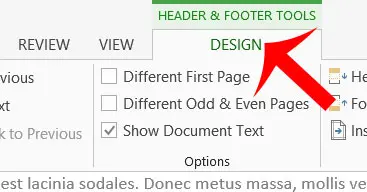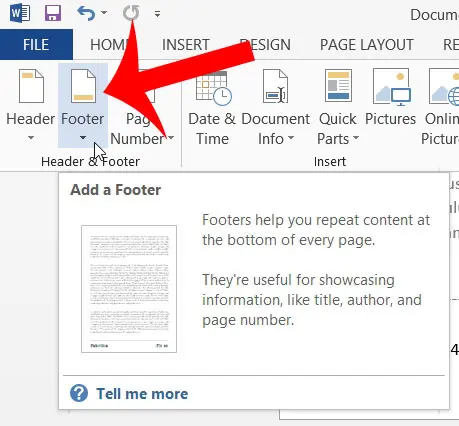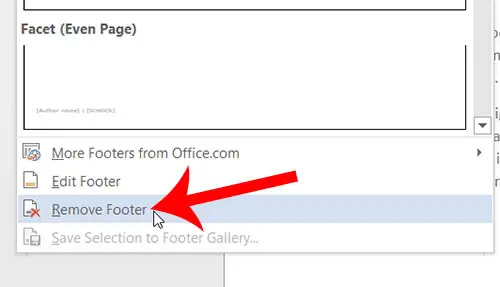When you are collaborating on a document with a group of people, or when you are working on a document that someone else created, it is likely that there will be something that you need to edit.
But the edits that need to be made might not always be located in the main document body and might instead be in the footer.
If the existing footer of a document contains information that you do not need, then you will need to know how to delete a footer in Word 2013.
Fortunately, there is a dedicated button that allows you to make this chage, and our tutorial will show you where to find it.
Remove a Footer in Microsoft Word 2013
The steps in this article are going to remove the entire footer from every page of your document. This includes items that are located in the footer, such as page numbers.
If there is an element of the footer that you want to keep, then you will need to manually delete each unwanted element from the footer instead of using the steps below.
Step 1: Open the document containing the footer that you want to remove.
Step 2: Double-click inside of the footer to make it the active section of the document. This will display a Header & Footer Tools tab at the top of the window.

Step 3: Click the Design tab under Header & Footer Tools at the top of the window.

Step 4: Click the Footer button in the Header & Footer section of the navigational ribbon.

Step 5: Click the Remove Footer option at the bottom of the expanded Footer menu.

Your footer will now be gone from every page of your document. Be sure to save the document after making these changes.
Once you know how to delete a footer in Word 2013, you can use this option to quickly remove all of the content that is appearing in that location in your document.
Now that you have deleted your footer, do you need to add a header? This article will show you how to add a header in Word 2013 if you need one.

Matthew Burleigh has been writing tech tutorials since 2008. His writing has appeared on dozens of different websites and been read over 50 million times.
After receiving his Bachelor’s and Master’s degrees in Computer Science he spent several years working in IT management for small businesses. However, he now works full time writing content online and creating websites.
His main writing topics include iPhones, Microsoft Office, Google Apps, Android, and Photoshop, but he has also written about many other tech topics as well.